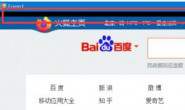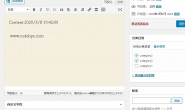|
5分
#1 |
用dev的gridcontrol 自带导出功能
|
|
#2 |
能详细的讲讲吗,我是第一次接触报表
|
|
5分
#3 |
可以将查询出来的结果数据,通过第三方的 NPOI 导出到excel, 用这个, 不要求目标机器上安装 office 软件。
具体方法这里有: |
|
#4 |
我看资料有的说用宏做,能做吗,能不能详细讲讲,NPOI的我很笨 不太能看明白
|
|
#5 |
我下到了一个npoi的类文件,不会用。太笨了,也不知道能不能满足我的需求
using System; using System.Web; using System.IO; using System.Data; namespace ShareProject.Servie } |
|
#6 |
接上
public static void DataTableToExcel(string attachName, string excelname, DataTable SourceTable, int[] Width, string[] Column,bool sort,string SheetName) { MemoryStream ms = new MemoryStream(); NPOI.HSSF.UserModel.HSSFWorkbook workbook = new NPOI.HSSF.UserModel.HSSFWorkbook(); NPOI.SS.UserModel.ISheet sheet; if (SheetName == “” || SheetName == null) sheet = workbook.CreateSheet(); else sheet = workbook.CreateSheet(SheetName); NPOI.SS.UserModel.IRow headerRow = sheet.CreateRow(0); if (Column != null && SourceTable.Columns.Count == Column.Length) { //使用自定义标题 if (sort) headerRow.CreateCell(0).SetCellValue(“序号”); for (int i = 0; i < Column.Length; i++) { if (sort) headerRow.CreateCell(i + 1).SetCellValue(Column[i]); else headerRow.CreateCell(i).SetCellValue(Column[i]); } } else { //使用datatable的字段名做标题 if (sort) headerRow.CreateCell(0).SetCellValue(“ID”); for (int i = 0; i < SourceTable.Columns.Count; i++) { if (sort) headerRow.CreateCell(i + 1).SetCellValue(SourceTable.Columns[i].Caption); else headerRow.CreateCell(i).SetCellValue(SourceTable.Columns[i].Caption); } } int rowIndex = 1; foreach (DataRow row in SourceTable.Rows) { NPOI.SS.UserModel.IRow dataRow = sheet.CreateRow(rowIndex); if (sort) dataRow.CreateCell(0).SetCellValue(rowIndex); for (int i = 0; i < SourceTable.Columns.Count; i++) { //循环把值写入到Excel表 if (sort) dataRow.CreateCell(i + 1).SetCellValue(row[i].ToString()); else dataRow.CreateCell(i).SetCellValue(row[i].ToString()); } rowIndex++; } if (sort) sheet.AutoSizeColumn(0); if (Width != null) { //使用自定义宽度 for (int i = 0; i < Width.Length; i++) { if (sort) sheet.SetColumnWidth(i + 1, Width[i] * 256); else sheet.SetColumnWidth(i, Width[i] * 256); } } else { //自动适用宽度 for (int i = 0; i < SourceTable.Columns.Count; i++) { if (sort) sheet.AutoSizeColumn(i + 1); else sheet.AutoSizeColumn(i); } } workbook.Write(ms); ms.Flush(); ms.Position = 0; sheet = null; headerRow = null; workbook = null; if (attachName == “” || attachName == null) { //直接输出文件,不在服务器保留文件 byte[] buffer = ms.ToArray(); int length; long dataToRead = ms.Length; excelname = Get_NewFileName(excelname + “.xls”); HttpContext.Current.Response.ContentType = “application/octet-stream”; HttpContext.Current.Response.AddHeader(“Content-Disposition”, “attachment; ” + excelname); while (dataToRead > 0) { if (HttpContext.Current.Response.IsClientConnected) { length = ms.Read(buffer, 0, 1000); HttpContext.Current.Response.OutputStream.Write(buffer, 0, length); HttpContext.Current.Response.Flush(); buffer = new Byte[10000]; dataToRead = dataToRead – length; } else { dataToRead = -1; } } buffer = null; ms = null; } else { //服务器保留文件 FileStream fs = new FileStream(attachName, FileMode.Create, FileAccess.Write); byte[] data = ms.ToArray(); fs.Write(data, 0, data.Length); fs.Flush(); fs.Close(); data = null; ms = null; fs = null; Down.DownFile(attachName, excelname + “.xls”); //excelname = Get_NewFileName(excelname + “.xls”); //HttpContext.Current.Response.ContentEncoding = System.Text.Encoding.GetEncoding(“UTF-8”); //HttpContext.Current.Response.AppendHeader(“content-disposition”, “attachment;” + excelname); //HttpContext.Current.Response.ContentType = “Application/excel”; //HttpContext.Current.Response.WriteFile(attachName); //HttpContext.Current.Response.End(); } } /// <summary> /// 使用NPOI导出Excel,只保留在服务器,不加载下载程序,服务器不需要安装Office插件,注意服务器上需要添加asp.net用户的权限 /// </summary> /// <param name=”attachName”>要在服务器上保留的文件物理地址</param> /// <param name=”SourceTable”>要输出的源数据DataTable</param> /// <param name=”Width”>自定义每一列的宽度,为null时,将自动适应</param> /// <param name=”Column”>自定义每一列的名称,为null时,将自动把DataTable里的字段标题设为标题</param> /// <param name=”sortid”>是否加序号,true为自动加序号,false为不用</param> /// <param name=”SheetName”>excel的Sheet表名,为空默认是Sheet0</param> public static void DataTableToExcel2(string attachName, DataTable SourceTable, int[] Width, string[] Column, bool sort, string SheetName) { MemoryStream ms = new MemoryStream(); NPOI.HSSF.UserModel.HSSFWorkbook workbook = new NPOI.HSSF.UserModel.HSSFWorkbook(); NPOI.SS.UserModel.ISheet sheet; if (SheetName == “” || SheetName == null) sheet = workbook.CreateSheet(); else sheet = workbook.CreateSheet(SheetName); NPOI.SS.UserModel.IRow headerRow = sheet.CreateRow(0); if (Column != null && SourceTable.Columns.Count == Column.Length) { //使用自定义标题 if (sort) headerRow.CreateCell(0).SetCellValue(“序号”); for (int i = 0; i < Column.Length; i++) { if (sort) headerRow.CreateCell(i + 1).SetCellValue(Column[i]); else headerRow.CreateCell(i).SetCellValue(Column[i]); } } else { //使用datatable的字段名做标题 if (sort) headerRow.CreateCell(0).SetCellValue(“ID”); for (int i = 0; i < SourceTable.Columns.Count; i++) { if (sort) headerRow.CreateCell(i + 1).SetCellValue(SourceTable.Columns[i].Caption); else headerRow.CreateCell(i).SetCellValue(SourceTable.Columns[i].Caption); } } int rowIndex = 1; foreach (DataRow row in SourceTable.Rows) { NPOI.SS.UserModel.IRow dataRow = sheet.CreateRow(rowIndex); if (sort) dataRow.CreateCell(0).SetCellValue(rowIndex); for (int i = 0; i < SourceTable.Columns.Count; i++) { //循环把值写入到Excel表 if (sort) dataRow.CreateCell(i + 1).SetCellValue(row[i].ToString()); else dataRow.CreateCell(i).SetCellValue(row[i].ToString()); } rowIndex++; } if (sort) sheet.AutoSizeColumn(0); if (Width != null) { //使用自定义宽度 for (int i = 0; i < Width.Length; i++) { if (sort) sheet.SetColumnWidth(i + 1, Width[i] * 256); else sheet.SetColumnWidth(i, Width[i] * 256); } } else { //自动适用宽度 for (int i = 0; i < SourceTable.Columns.Count; i++) { if (sort) sheet.AutoSizeColumn(i + 1); else sheet.AutoSizeColumn(i); } } workbook.Write(ms); ms.Flush(); ms.Position = 0; sheet = null; headerRow = null; workbook = null; FileStream fs = new FileStream(attachName, FileMode.Create, FileAccess.Write); byte[] data = ms.ToArray(); fs.Write(data, 0, data.Length); fs.Flush(); fs.Close(); data = null; ms = null; fs = null; } public static void DataTable2Csv(string attachName, DataTable tab, string[] tabname) { StringWriter sw = new StringWriter(); string tempstr = “”; for (int col = 0; col < tabname.Length; col++) { if (tempstr == “”) tempstr = tabname[col].Replace(“,”, “”); else tempstr += “,” + tabname[col]; } sw.WriteLine(tempstr); foreach (DataRow dr in tab.Rows) { tempstr = “”; for (int colIndex = 0; colIndex < tab.Columns.Count; colIndex++) { if (tempstr == “”) tempstr = dr[colIndex].ToString(); else tempstr += “,” + dr[colIndex].ToString(); } sw.WriteLine(tempstr); } |
|
#7 |
说起复杂报表 ReportViewer就是一高手器啊 不用写代码 图形化设计 还自带输出excel word pdf功能 简直是杀人灭口 输出报表 必备良药
|
|
#8 |
回复7楼:
是要下一个控件吗,我是vs2008,有没有具体用的教程,谢谢
|
|
#9 |
回复8楼:
2013有 然后之前没有的话你可以用水晶报表
这种复杂报表的需求不止你一个人有 |
|
#10 |
回复9楼: 网上可以下下来用吗,客户要求是尽量不用水晶报表 |
|
30分
#11 |
回复10楼:
客户说不要用 那可以啊 这种功能自己重新做一个要加钱
|
|
#12 |
谁有详细一点的讲解操作啊,我是太笨啦
|




